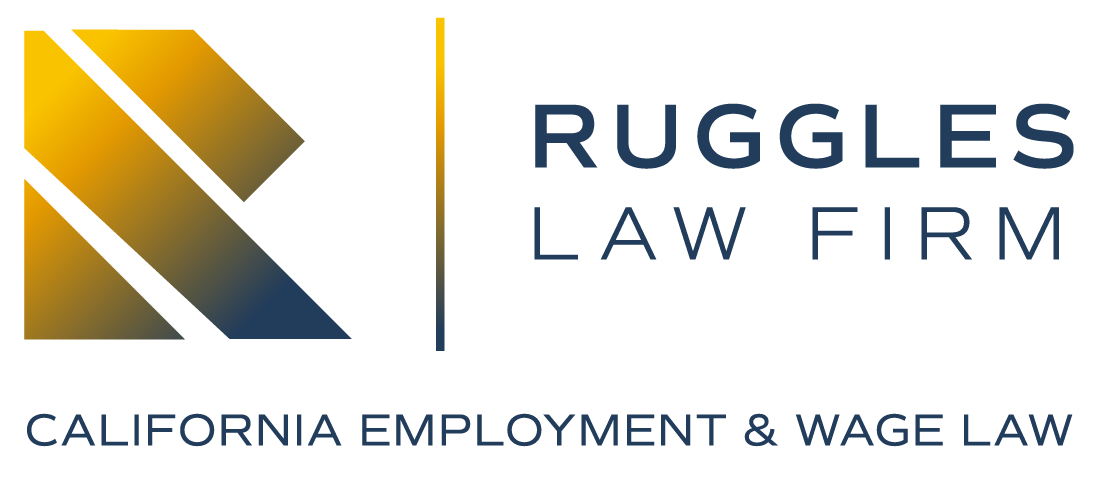If you’ve worked hard for decades only to be passed over for someone younger, you’re not imagining things. Learning how to prove age discrimination in California is critical because employers rarely admit bias openly. They hide it behind so-called “business decisions” such as restructuring, “fresh leadership,” or “cost-saving” moves that somehow always favor younger workers. When promotions go to less-experienced employees and opportunities quietly disappear, the pattern speaks for itself.
I’m Matt Ruggles, and I’ve been practicing employment law in California for more than thirty years. In that time, I’ve seen how experienced employees are often pushed aside under the guise of efficiency or culture fit. Sometimes it’s subtle, like projects that shift to younger hands or feedback that suddenly turns negative. Other times it’s blunt, for example, a promotion that never gets posted or a job eliminated and refilled by someone twenty years younger.
A recent Ninth Circuit decision, Caldrone v. Circle K Stores, Inc., exposes how employers cross the line when they quietly deny older workers a fair shot at advancement. In this post, I’ll explain how California law protects you under the Fair Employment and Housing Act (FEHA) and the federal Age Discrimination in Employment Act (ADEA), and what steps you can take to prove when age bias is driving your employer’s decisions.
If you believe you were passed over for a promotion or treated unfairly because of your age, contact the Ruggles Law Firm at (916) 758-8058. We help California employees uncover the truth and hold employers accountable for age discrimination.
Understanding How Employers Hide Age Discrimination in California
Age discrimination rarely announces itself. Most employers know better than to say what they are actually thinking, so bias shows up through coded language and quiet decisions that keep older workers off the promotion track. It is often wrapped in talk of “fresh energy” or “strategic realignment,” but the result is the same. Experience gets devalued, and younger employees move ahead.
I recently came across a case that captures this problem perfectly. It shows how an employer can shut older workers out of opportunity without ever mentioning age. Keep reading, and I will explain how this case demonstrates exactly how age discrimination operates in California workplaces.
Case Study: Age Discrimination in a California Workplace
In the recent Caldrone v. Circle K Stores, Inc. decision, three long-time employees discovered just how easily an employer can shut older workers out of opportunity. Each of them had spent years proving themselves as top performers and had made it clear they wanted to move up. When a higher-level West Coast Regional Director position opened, they expected a fair shot. Instead, Circle K never posted the job, never invited applications, and quietly handed the promotion to a younger employee.
Real Example of Age Discrimination in a California Workplace
That simple act, keeping the position under wraps, became the heart of the case. The three employees were all in their mid to late fifties. The person chosen for the role was about ten years younger and had a weaker performance record. The company claimed the move was based on “efficiency” and “business sense.” The court didn’t buy it.
The Ninth Circuit called this a textbook example of how employers disguise age discrimination as routine management decisions. By failing to open the position to applications, Circle K denied its older employees a fair opportunity to compete. The judges made it clear: if a company chooses to promote a younger worker without even giving older employees a chance to apply, that can violate both California’s Fair Employment and Housing Act (FEHA) and federal law.
To understand the foundation of these protections, read my blog, FEHA: How It Protects California Employees.
Key Legal Question in the Circle K Age Discrimination Case
The key legal question in Caldrone v. Circle K Stores, Inc. was straightforward but important: can an employer escape liability for age discrimination simply by never opening a job to applications?
The court’s answer was clear: no. Employers cannot claim that an employee “failed to apply” when the company never gave anyone a chance to apply in the first place. This issue matters because many employers try to avoid discrimination claims by arguing that older employees did not formally seek a promotion. The Ninth Circuit rejected that reasoning, recognizing that fairness requires an equal opportunity to compete.
California Age Discrimination Laws Explained (FEHA and ADEA)
Under both the Age Discrimination in Employment Act (ADEA) and California’s Fair Employment and Housing Act (FEHA), workers who are 40 or older are protected from being treated unfairly because of their age. These laws prohibit employers from using hidden practices, such as unannounced promotions or handpicking younger employees, that effectively block older workers from advancing.
How Courts Decide If Discrimination Occurred in California
To decide whether discrimination has occurred, courts apply what is known as the McDonnell Douglas framework, a three-step test used in employment discrimination cases. In plain terms, it works like this:
- The employee must first show basic facts suggesting discrimination, such as being qualified but denied a promotion that went to someone younger.
- The employer then gets a chance to explain its decision with a so-called “legitimate, non-discriminatory reason.”
- Finally, the employee can present evidence showing that the employer’s reason is only a pretext, meaning a cover story hiding the real motive of discrimination.
This framework is critical to prove age discrimination in California because employers rarely admit to bias outright. They usually point to “business needs” or “unique qualifications.” Courts use this method to look past those surface explanations and determine whether the pattern of conduct tells a different story.
In the Circle K case, that is exactly what happened. The company’s stated reason, that the younger employee was the only one to express interest, did not hold up once the court realized the position had never been posted in the first place.
What the Court Decided: How California Courts Evaluate Proof of Age Discrimination
The Ninth Circuit Court of Appeals reversed the lower court’s decision and gave the three Circle K employees a second chance to prove their claims. The court ruled that when a company does not post a promotion opportunity or invite applications, employees are not required to apply in order to claim age discrimination. In other words, an employer cannot quietly promote a younger worker and then argue that older employees “never applied.”
Why This Ruling Matters for California Employees Over 40
This ruling carries real weight for California employees. It confirms that companies must offer a fair and open process when filling promotions, especially when they know older workers are interested. Keeping a position secret or handpicking a younger candidate can be a red flag for bias under both the Age Discrimination in Employment Act (ADEA) and California’s Fair Employment and Housing Act (FEHA).
Evidence That Can Help Prove Age Discrimination in California
The court also recognized that context matters. The employees in this case presented evidence that company executives had made age-related comments such as calling older workers “out of touch” and suggesting that they should “think about retiring.” Remarks like these can be powerful evidence of age bias because they reveal how decision-makers truly viewed their older employees.
In summarizing its reasoning, the Ninth Circuit made an important point: not posting a job does not excuse discrimination. The judges made it clear that an employer cannot avoid the law simply by skipping the application process. If the evidence shows that age played a role in who got the job, the case belongs before a jury.
This decision reinforces what I see in many cases here in California. Employers often hide behind the language of “business decisions,” but when those decisions consistently leave older workers behind, the pattern speaks louder than their excuses.
To understand how employers use “at-will employment” as a cover story for firing older or outspoken employees, read my blog, The At-Will Employment Hoax: How Employers Cover Up Wrongful Termination.
Why This Decision Strengthens the Rights of Older Workers in California
The Caldrone v. Circle K Stores, Inc. ruling is more than a win for three employees. It strengthens the protections that all California workers over 40 already have under the state’s Fair Employment and Housing Act (FEHA).
What This Case Means for California Employees Over 40
California law has long made it illegal for employers to discriminate based on age, but this case closes one of the loopholes that companies often exploit. When a business quietly fills positions without posting them, it denies older employees the same opportunity to compete. The Ninth Circuit made it clear that this kind of selective process is not just unfair, it can be unlawful.
The decision reinforces a basic rule: employers must apply their promotion and posting policies consistently and fairly. If a company usually announces job openings but suddenly fills one in secret when older employees are eligible, that change in practice can signal bias.
California’s employment laws were written to ensure equal opportunity, not silent exclusion. Under the FEHA, every qualified employee deserves the chance to compete for advancement, regardless of age. This case reminds employers that they cannot manipulate hiring or promotion practices to favor younger workers and then hide behind internal policies.
For employees, the takeaway is clear. If you have built your career, maintained strong performance, and shown interest in advancement, you have the right to be considered on merit, not on age. When an employer’s process starts looking selective or secretive, that is often the first sign that something is wrong.
To learn more about how age discrimination fits within California’s broader protections for employees, read my blog, Workplace Discrimination in California: All Employees Have Equal Rights.
Common Signs of Age Discrimination at Work in California
Age discrimination is rarely obvious. Most of the time, it shows up through small, repeated actions or comments that, taken together, reveal a pattern of bias. If you are over 40, here are some common warning signs to look out for in your workplace:
- Younger, less-qualified employees are promoted instead of you. Experience and performance suddenly seem to matter less than being “new” or “energetic.”
- Supervisors make comments about age or retirement. Phrases like “we’re looking for fresh energy,” “this is a young team,” or “maybe it’s time to slow down” can signal illegal bias.
- Jobs are quietly filled or “restructured.” Promotions and opportunities are not posted, or positions are rewritten to favor younger employees.
- You are excluded from meetings, training, or leadership opportunities. Older employees are often left out of projects that lead to advancement.
- Your performance reviews change without explanation. Strong reviews may suddenly turn negative, creating a paper trail for termination or demotion.
- You feel pressure to retire. Employers sometimes disguise this as concern for “work-life balance” or “new directions for the company.”
If several of these signs sound familiar, it may not be coincidence. California law protects employees from subtle and systemic age bias. What seems like an isolated incident is often part of a broader pattern that violates California’s Fair Employment and Housing Act.
To understand the most common mistakes employees make when trying to prove bias, read my blog, Workplace Discrimination: 7 Things California Employees Get Wrong.
If you are unsure how to prove age discrimination or what to do next, call the Ruggles Law Firm at (916) 758-8058 for a free consultation. We will review your situation and explain your rights under California law.
Steps to Take When Proving Age Discrimination in California Workplaces
If you think your employer is treating you unfairly because of your age, it is important to act quickly and strategically. Here are the key steps every California employee should take to protect their rights.
Step 1: Document Everything to Help Prove Age Discrimination in California
Keep a written record of what you see and hear. Save copies of emails, text messages, and performance reviews that show how you are being treated. Write down specific dates, names, and what was said in any conversations that felt discriminatory. Even offhand remarks such as “you’re getting close to retirement” or “we need younger leadership” can become powerful evidence later. Patterns matter, and the details you collect now may make the difference in proving your claim.
Step 2: Preserve Evidence That Supports Your Discrimination Claim in California
If younger, less-qualified employees are promoted ahead of you, or if positions suddenly disappear or get “restructured,” note those events. Keep track of any changes in company policy, promotion practices, or job postings that seem designed to exclude older workers. The law focuses on consistency. When employers break from their normal procedures only when older employees are involved, that inconsistency can show bias.
Step 3: File a Complaint or Get Legal Help for Proving Age Discrimination in California
You can file a complaint with the California Civil Rights Department (CRD), which enforces the Fair Employment and Housing Act (FEHA). The CRD investigates claims of age discrimination and can issue a “Right to Sue” notice if legal action becomes necessary. You can also speak directly with an employment lawyer who handles discrimination cases. A lawyer can help you build a clear timeline, secure witness statements, and make sure your claim is properly filed under both state and federal law.
If you decide to report age discrimination internally, make sure your complaint is clear and documented. To understand the best way to do that, read my blog, How to Make a Workplace Complaint in California: Verbal versus Written
Step 4: Act Quickly to Protect Your Age Discrimination Rights in California
Strict time limits apply under both the FEHA and the federal Age Discrimination in Employment Act (ADEA). If you wait too long, you may lose your right to act. Many employees assume they can report discrimination after things settle down, only to find out they have missed their deadline. Taking early action preserves your rights and often strengthens your negotiating position.
Step 5: Protect Yourself While You Prove Age Discrimination in California
If you are still employed, stay professional, keep doing your job well, and continue documenting what happens. Do not quit without speaking to an attorney first. Leaving your job without advice can affect your ability to recover lost wages or prove your case later.
I have seen too many employees wait until it is too late. Acting early, gathering proof, and getting sound legal guidance can mean the difference between walking away quietly and holding your employer accountable under California law.
To understand why “at-will employment” is often used to disguise illegal firings, read my blog, The At-Will Employment Hoax: How Employers Cover Up Wrongful Termination.
Key Takeaways: How to Prove Age Discrimination in California
- Age discrimination often hides behind “business decisions.” If promotions or job postings seem selective or secretive, that pattern can point to bias.
- California law protects employees over 40 under the FEHA and ADEA. Both state and federal laws prohibit practices that favor younger workers, even indirectly.
- Courts look for patterns of age discrimination, not just words. Sudden policy changes, unposted jobs, or inconsistent performance reviews can all serve as evidence of age discrimination in California.
- Documentation is your strongest defense. Keep records of remarks, performance changes, and promotion practices that appear targeted toward older employees.
- Act quickly to protect your rights. File a complaint with the California Civil Rights Department (CRD) or consult an employment attorney to preserve your legal options.
Frequently Asked Questions About Proving Age Discrimination in California
How do I prove age discrimination in California if my employer never said anything about my age?
Direct comments about age are rare, but the law looks at patterns and conduct. If younger, less-qualified employees are promoted while you are repeatedly overlooked, that can help prove bias. California courts also consider subtle clues such as changes in duties, unposted job openings, or sudden negative reviews after years of strong performance. Documentation is key.
What evidence helps in proving workplace age discrimination under California law?
Evidence can include emails, performance evaluations, or witness statements that show how decisions were made. Even remarks like “you’re getting close to retirement” or “we want fresh energy” can support a claim. The goal is to show that your age was a motivating factor, not just that you were unhappy with an employer’s decision.
Can I bring a claim for age discrimination in California if I was passed over for a promotion I never applied for?
Yes. A recent Ninth Circuit decision confirmed that employees are not required to apply for a job if the company never posted it or allowed applications. If your employer filled a position in secret or handpicked a younger worker, you may still have a valid claim under the Fair Employment and Housing Act (FEHA).
What should I do if I suspect age discrimination but I am still employed?
Stay calm, stay professional, and start gathering evidence. Keep records of what happens, save relevant emails, and note specific incidents or comments. Then, talk to an employment lawyer who has experience proving age discrimination claims in California. Acting early can protect your rights before key deadlines expire.
How long do I have to file an age discrimination claim in California?
Most employees must file with the California Civil Rights Department within three years of the discriminatory act under FEHA. Federal ADEA claims generally have a 300-day filing window.
Choosing the right attorney can make all the difference in proving your case. To learn what to look for when hiring representation, read my blog, How Do I Select a California Employment Lawyer?
Contact the Ruggles Law Firm About Proving Age Discrimination in California
Matt Ruggles has a thorough understanding of California employment laws and decades of practical experience litigating employment law claims in California state and federal courts. Using all of his knowledge and experience, Matt and his team can quickly evaluate your potential claim and give you realistic advice on what you can expect if you sue your former employer.
Contact the Ruggles Law Firm at 916-758-8058 for a free, no-obligation evaluation.
Blog posts are not legal advice and are for information purposes only. Contact the Ruggles Law Firm for consideration of your individual circumstances.




